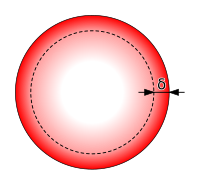
Photo from wikipedia
Single Gaussian wave groups with different initial wave steepness ε0 and width N are produced in laboratory in finite depth to study the nonlinear evolution, the extreme events and breaking.… Click to show full abstract
Single Gaussian wave groups with different initial wave steepness ε0 and width N are produced in laboratory in finite depth to study the nonlinear evolution, the extreme events and breaking. The results show that wave groups with larger ε0 will evolve to be several envelope solitons (short wave groups). By analyzing geometric parameters, a break in the evolution of the wave elevation and asymmetric parameters after extreme wave may be an indicator for the inception of refocus and the maximal wave moving to the middle, namely, wave down-shift occurs. The analysis of the surface elevations with HHT (Hilbert-Huang Transform), which presents the concrete local variation of energy in time and frequency can be exhibited clearly, reveals that the higher frequency components play a major role in forming the extreme event and the contribution to the nonlinearity. Instantaneous energy and frequency in the vicinity of the extreme wave are also examined locally. For spilling breakers, the energy residing in the whole wave front dissipates much more due to breaking, while the energy in the rear of wave crest loses little, and the intra-wave frequency modulation increases as focus. It illustrates that the maximal first order instantaneous frequency f1 and the largest crest tend to emerge at the same time after extreme wave when significant energy dissipation happens, and vice versa. In addition, it shows that there is no obvious relation of the CDN (combined degree of nonlinearity) to the wave breaking for the single Gaussian wave group in finite water depth.
Journal Title: China Ocean Engineering
Year Published: 2018
Link to full text (if available)
Share on Social Media: Sign Up to like & get
recommendations!